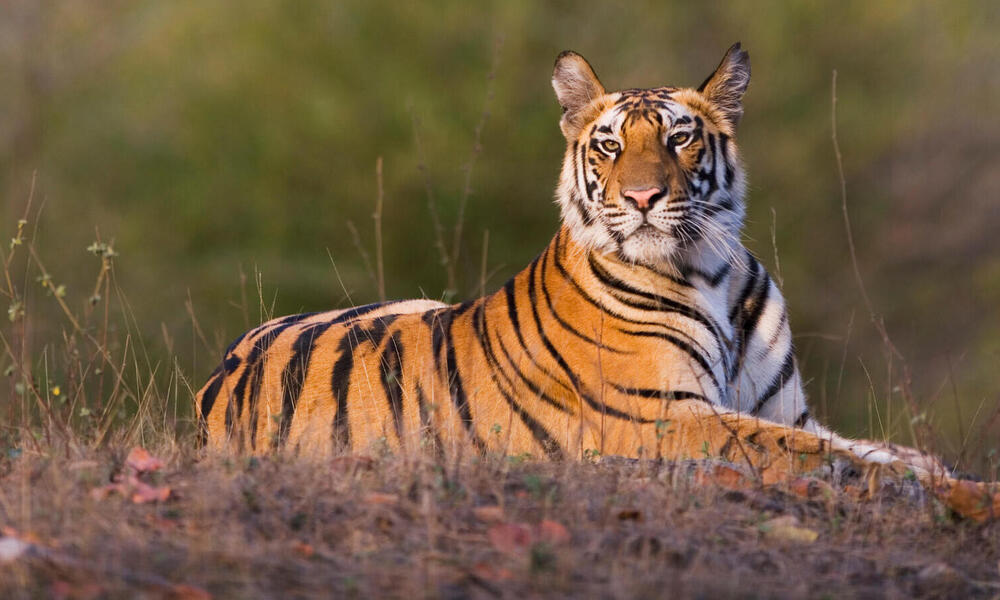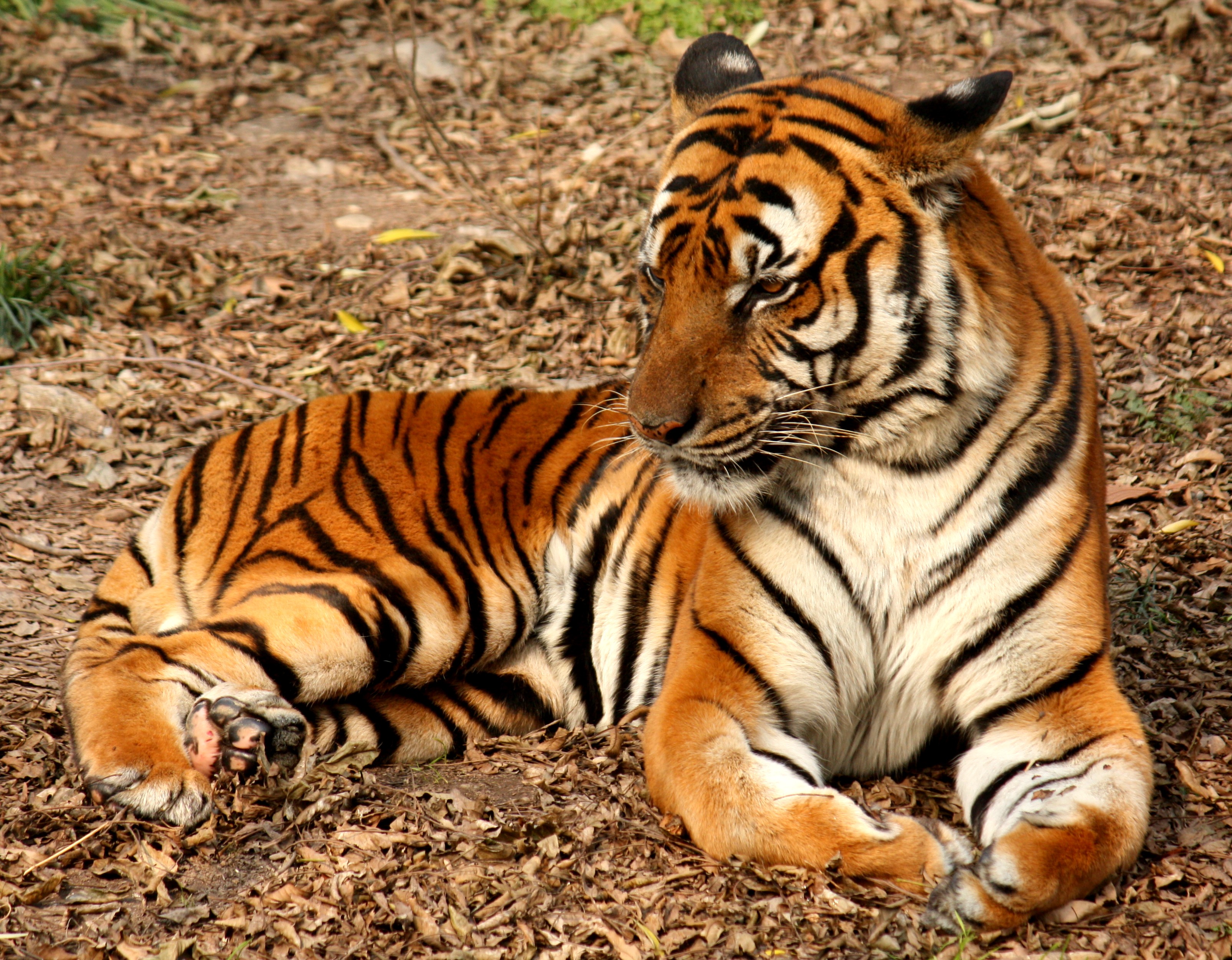Tigers are one of the most awe-inspiring and courageous wild animals living today. Unfortunately, all types of tigers are either endangered at some level or extinct due to habitat loss, illegal killing, and shrinking food supply.
In this article, we will discover the top 6 rarest tiger species on the planet. These species are facing the highest risk of extinction and need our attention to protect them. We will explore their characteristics, habitats, and current population status to understand the challenges they are facing.
You are reading: Discover The Top 6 Rarest Tiger Species On The Planet
Let’s dive into the world of tigers and learn about these magnificent creatures.

Bandhavgarh National Park, India; 17 months old Bengal tiger cub (male) resting in open area early morning, dry season
Top 6 Rarest Tiger Species On The Planet
South China Tiger

The South China Tiger is a subspecies of the Panthera tigris tigris and is native to southern China. It is considered one of the rarest tiger species in the world and has been listed as Critically Endangered on China’s Red List of Vertebrates.
The South China Tiger is possibly extinct in the wild since no wild individual has been recorded since the late 1980s. There are currently about 100 South China Tigers in captivity, most of which are in Chinese zoos and breeding centers, and the remainder are in the care of Save China’s Tigers at Laohu Valley.
The South China Tiger can thrive in several different habitats, though it prefers forests and woodlands. Its diet includes wild pig, serow, barking deer, tufted deer, and sambar deer.
The main concerns regarding the reintroduction of captive-born South China Tigers into large enclosures in southern China are the availability of suitable habitat and adequate prey, and the fitness of the captive population. A healthy, self-sustaining captive South China
Tiger population is the critical first step to the preservation of what remains of this tiger subspecies.
Malayan Tiger
The Malayan Tiger, also known as Panthera tigris jacksoni, is a subspecies of tiger native to the southern and central parts of the Malay Peninsula and the southern tip of Thailand.
It is the smallest subspecies of mainland tigers. The Malayan Tiger was only recognized as a distinct subspecies in 2004, previously believed to be the same as the Indochinese Tiger.
– Population and Conservation Status: The Malayan Tiger has been classified as Critically Endangered on the IUCN Red List since 2015. As of April 2014, the population was estimated to be between 80 and 120 mature individuals, with a continuous declining trend. Currently, there are fewer than 300 Malayan Tigers surviving in their natural range. Habitat loss and fragmentation are the leading causes of their decline, resulting in prey shortages and a decrease in tiger numbers in the wild.
– Habitat and Diet: Malayan Tigers inhabit dense tropical forests in the Malaysian states of Pahang, Kelantan, Terengganu, and Perak. Their diet includes wild pig, serow, barking deer, tufted deer, and sambar deer.
– Unique Characteristics: Every Malayan Tiger has a pattern of stripes that is completely unique to that individual. They are known to sleep most of the day and hunt at night. Malayan Tigers communicate with each other through chuffing (puffing) sounds, as well as roaring and growling. The male Malayan Tiger is very territorial and will fight with other males who enter its area.
Read more : Types Of Sharks 25 Shark Species You Must Know
– Conservation Efforts: Efforts are being made to protect the remaining Malayan Tiger population. For example, in Taman Negara National Park, there has been confirmation of a significant population, successful reproduction, and cubs surviving into sub-adulthood. Patrol teams are also working on capturing and prosecuting poachers through vigilance mapping and identifying targeted patrol sectors and incursion locations.
Indochinese Tiger

The Indochinese Tiger, also known as Panthera tigris corbetti, is a subspecies of tiger native to Southeast Asia. Historically, Indochinese tigers lived in Cambodia, China, Laos, Myanmar, Thailand, and Vietnam. However, their population has declined to a mere 250 individuals, with breeding populations believed to remain only in Myanmar and Thailand.
The Indochinese tiger’s ground coloration is darker, with more rather short and narrow single stripes; its skull is smaller than that of the Bengal tiger.
In body size, it is smaller than the Bengal and Siberian tigers. Males range in size from 255 to 285 cm (100 to 112 in) and in weight, from 150 to 195 kg (331 to 430 lb).
Indochinese tigers have suffered declining populations for years, with hunting and habitat loss being the primary causes.
Currently, a major threat to the remaining wild tigers is the illegal wildlife trade, which is driven by demand for tiger parts for use in traditional medicine and as luxury items. Efforts are being made to protect the remaining Indochinese Tiger population, including anti-poaching patrols and habitat conservation.
Sumatran Tiger
The Sumatran Tiger is a population of Panthera tigris sondaica on the Indonesian island of Sumatra. It is the smallest surviving tiger subspecies and the only surviving tiger population in the Sunda Islands, where the Bali and Javan tigers are extinct.
The Sumatran tiger’s stripes are closer together and its fur is a darker orange than other subspecies, better allowing it to blend into its tropical rainforest habitat.
Its distinctive beard and mane also help set it apart. Like all tigers, Sumatran tigers are carnivores and will prey on almost any available animal, big or small, including fish, monkeys, wild boar, tapirs, and deer, among many others. They hunt at night and tend to make about one large kill a week.
Unfortunately, all subspecies of tiger are endangered (and three already are extinct) because of the combined threats of habitat loss, fear-based persecution by humans, and wildlife trade for their skins, bones, and other body parts.
The Sumatran tiger is classified as Critically Endangered with less than 400 individuals estimated still surviving in the wild. Habitat for the Sumatran tiger has been drastically reduced by clearing for agriculture (particularly oil palm), plantations, and settlement.
Between 1985 and 2014, the island’s forest cover plunged from 58% to 26%. Efforts are being made to protect the remaining Sumatran Tiger population, including anti-poaching patrols and habitat conservation.
Siberian Tiger
The Siberian Tiger, also known as the Amur tiger, is a population of the tiger subspecies Panthera tigris tigris native to the Russian Far East, Northeast China, and possibly North Korea. It is the largest cat in the world, with adult males weighing up to 320 kg (700 lb.) and females weighing up to 180 kg (400 lb.).
Read more : Top 10 Biggest Animals That Ever Walked The Earth
The Siberian tiger’s coat is a muted orange color with black stripes, and it has thick fur to help it survive in the frigid climate of its habitat.
The Siberian tiger is a solitary hunter that preys on wild boars, badgers, raccoon dogs, various types of deer, and even small Asiatic black bears.
The population of Siberian tigers has been on the rise in recent years, with an estimated 500 individuals in the wild. However, they are still considered an endangered species due to habitat loss and poaching for their fur and body parts. Efforts are being made to protect the remaining Siberian Tiger population, including anti-poaching patrols and habitat conservation.
Bengal Tiger
The Bengal Tiger, also known as Panthera tigris tigris, is the most common tiger and number about half of all wild tigers. Here are some facts about the Bengal Tiger:
– Appearance: The Bengal tiger’s coat is yellow to light orange, with stripes ranging from dark brown to black; the belly and the interior parts of the limbs are white, and the tail is orange with black rings. The Bengal tiger is distinguished from other tiger subspecies by its orange coat accented by prominent brownish-to-black stripes. The largest male Bengal tigers can grow up to about 3.2 meters (10.5 feet) long (including a 1-meter- [3.3-foot-] long tail) and weigh nearly 295 kg (about 650 pounds).
– Habitat and Diet: Bengal tigers live in India and are sometimes called Indian tigers. They inhabit dense tropical forests and mangroves. They are solitary hunters, preying primarily on ungulates (including deer and antelope), gaurs, and wild boars.
– Conservation Status: The Bengal tiger is classified as Endangered on the IUCN Red List. The population of Bengal tigers has been declining due to habitat loss, poaching, and human-tiger conflict. Efforts are being made to protect the remaining Bengal Tiger population, including anti-poaching patrols and habitat conservation.
– Cultural Significance: The Bengal tiger is the national animal of Bangladesh and India. Bangladeshi banknotes feature a tiger, and the political party Muslim League of Pakistan uses the tiger as its election symbol. Tipu Sultan, who ruled Mysore in late 18th-century India, was also a great admirer of the animal.
FAQS
1. What are the top 6 rarest tiger species on the planet?
The top 6 rarest tiger species on the planet are the South China Tiger, Malayan Tiger, Indochinese Tiger, Sumatran Tiger, Siberian Tiger, and Bengal Tiger.
2. Why are tigers endangered?
All types of tigers are either endangered at some level or extinct due to habitat loss, illegal killing, and shrinking food supply.
3. What is the conservation status of the Bengal Tiger?
The Bengal Tiger is classified as Endangered on the IUCN Red List due to habitat loss, poaching, and human-tiger conflict.
4. How many South China Tigers are left in the wild?
The South China Tiger is possibly extinct in the wild since no wild individual has been recorded since the late 1980s. There are currently about 100 South China Tigers in captivity.
5. What is the population of the Siberian Tiger?
The population of Siberian tigers has been on the rise in recent years, with an estimated 500 individuals in the wild.
6. What is the conservation status of the Sumatran Tiger?
The Sumatran Tiger is classified as Critically Endangered with less than 400 individuals estimated still surviving in the wild.
7. What is the conservation status of the Indochinese Tiger?
The Indochinese Tiger is classified as Endangered on the IUCN Red List, with a population of only 250 individuals remaining.
Source: https://petstutorial.com
Category: Animals










